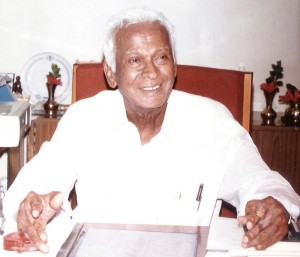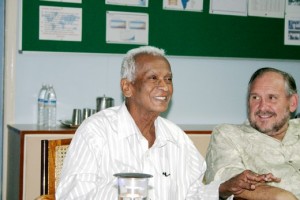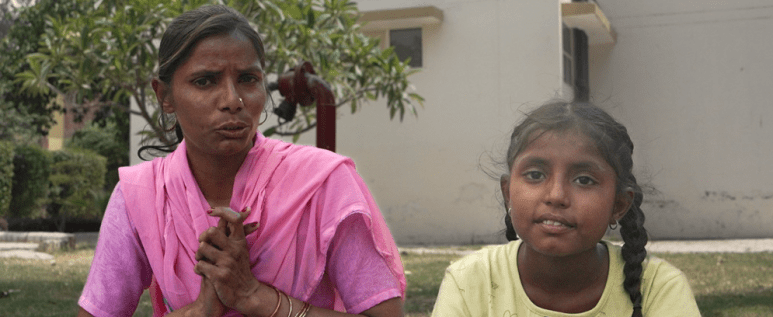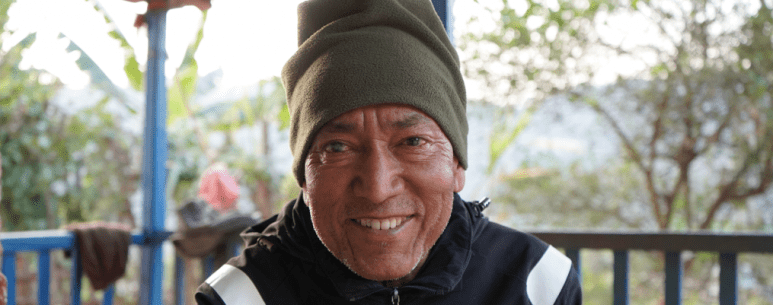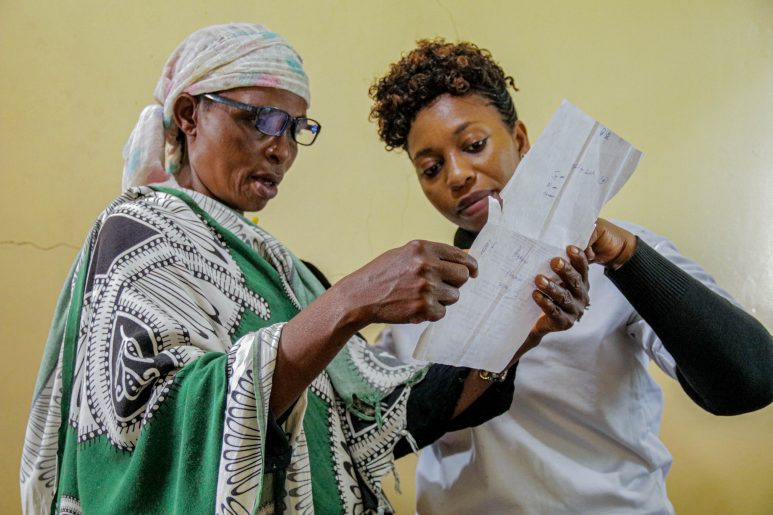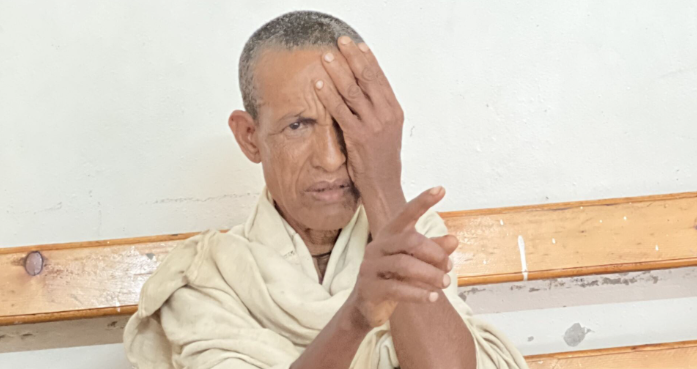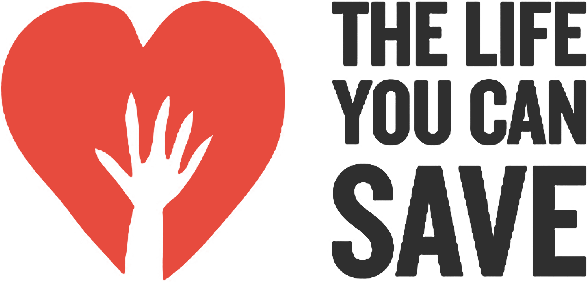Fixes looks at solutions to social problems and why they work.
As the United States struggles to find new business models for health care, some innovators are looking to other industries, ones that provide high-quality services for low prices. In a recent article in The New Yorker, for example, Atul Gawande suggests that the Cheesecake Factory restaurant chain — with its size, central control and accountability for the customer experience — could be a model of sorts for health care. That’s not as outlandish as it seems. The world’s largest provider of eye care has found success by directly adapting the management practices of another big-box food brand, one that is not often associated with good health: McDonald’s. Aravind can practice compassion successfully because it is run like a McDonald’s.
Dr. Venkataswamy “Dr. V”
In 1976, Dr. Govindappa Venkataswamy — known as Dr. V — retired from performing eye surgery at the Government Medical College in Madurai, Tamil Nadu, a state in India’s south. He decided to devote his remaining years to eliminating needless blindness among India’s poor. Twelve million people are blind in India, the vast majority of them from cataracts, which tend to strike people in India before 60 — earlier than in the West. Blindness robs a poor person of his livelihood and with it, his sense of self-worth; it is often a fatal disease. A blind person, the Indian saying goes, is “a mouth with no hands.”
A blind person, the Indian saying goes, is “a mouth with no hands.”
Dr. V started by establishing an 11-bed hospital with six beds reserved for patients who could not pay and five for those who would pay modest rates. He persuaded his siblings to join him in mortgaging their houses, pooling their savings and pawning their jewels to build it.
Today, the Aravind Eye Care System is a network of hospitals, clinics, community outreach efforts, factories, and research and training institutes in south India that have treated more than 32 million patients and has performed 4 million surgeries. And it is still largely run by Dr. V’s siblings and their spouses and children — he has at least 21 relatives who are eye surgeons. (Aravind’s story is well-told in depth in a new book, “Infinite Vision.”)
Aravind is not just a health success, it is a financial success. Many health nonprofits in developing countries rely on government help or donations, but Aravind’s core services are sustainable: patient care and the construction of new hospitals are funded by fees from paying patients. And at Aravind, patients pay only if they want to. The majority of Aravind’s patients pay only a symbolic amount or nothing at all.
Dr. V was guided by the teachings of the radical Indian nationalist and mystic Sri Aurobindo (Aravind is a southern Indian variation of Aurobindo), who located man’s search for his divine nature not in turning away from the world, but by engaging with it. This philosophy, however, has produced a sustainable business model because of the other major influence on Dr. V: McDonald’s. Sri Aurobindo and McDonald’s are an unlikely pair. But Aravind can practice compassion successfully because it is run like a McDonald’s, with assembly-line efficiency, strict quality norms, brand recognition, standardization, consistency, ruthless cost control and above all, volume.
Aravind’s efficiency allows its paying patients to subsidize the free ones, while still paying far less than they would at other Indian hospitals. Each year, Aravind does 60 percent as many eye surgeries as the United Kingdom’s National Health System, at one one-thousandth of the cost. Aravind’s ideas reach around the world. It runs hospitals in other parts of India with partners. It is also host to a parade of people who come to learn how it works, and it sends staff to work with other organizations. So far about 300 hospitals in India and in other countries are using the Aravind model. All are eye hospitals. But Aravind has also trained staff from maternity hospitals, cancer centers, and male circumcision clinics, among other places. Some share Aravind’s social mission. Others simply want to operate more efficiently.
The vast majority of people blind from cataracts in rural India have no idea why they are blind, nor that a surgery exists that can restore their sight in a few minutes. Aravind attracts these patients in two ways. First, it holds eye camps — 40 a week around the states of Tamil Nadu and Kerala. The camps visit villages every few months, offering eye exams, basic treatments, and fast, cheap glasses. Patients requiring surgery are invited with a family member to come to the nearest of Aravind’s nine hospitals; all transport and lodging, like the surgery, is free.
When Aravind surveyed the impact of its camps, it found to its dismay that they only attracted 7 percent of people in a village who needed care, mainly because they were infrequent. To provide a permanent presence in rural areas, Aravind established 36 storefront vision centers. They are staffed by rural women recruited and given two years’ training by Aravind. They have cameras, so doctors at Aravind’s hospitals can do examinations remotely. These centers increase Aravind’s market penetration to about 30 percent within one year of operation.
At Aravind’s hospitals, free patients lodge on a mat on the floor in a 30-person dormitory. Paying patients can choose various levels of luxury, including private, air-conditioned rooms. All patients get best-practice cataract surgeries, but paying patients can choose more sophisticated surgeries with faster recoveries (but not higher success rates). The doctors are identical, rotating between the free and paid wings.
Also standard for all patients is the Aravind assembly line. Dr. V spent a few days at McDonalds’ Hamburger University in Oak Brook,, Ill., but that visit was a product of his longstanding obsession with efficiency. “This man would go into an airport and walk around with the janitor and see how he cleans the toilet,” said Dr. S. Aravind, an eye surgeon with a masters degree in business who is Aravind’s director of projects. (He is Dr. V’s nephew, also named for Sri Aurobindo.) “He would go to a five-star hotel and follow the catering people.”
Doctors are hard to find and expensive, so the surgical system is set up to get the most out of them. Patients are prepared before surgery and bandaged afterward by Aravind-trained nurses. The operating room has two tables. The doctor performs a surgery — perhaps 5 minutes — on Table 1, sterilizes her hands and turns to Table 2. Meanwhile, a new patient is prepped on Table 1.
Aravind doctors do more than 2,000 surgeries a year; the average at other Indian hospitals is around 300. As for quality, Aravind’s rate of surgical complications is half that of eye hospitals in Britain. This volume is key to Aravind’s ability to offer free care. The building and staff costs are the same no matter how many surgeries each doctor performs. High volume means that these fixed costs are spread among vastly more people.
In the 1980s, Aravind faced a dilemma. A new surgery, which implanted a lens in the patient’s eye, had become the gold standard for treating cataracts. But these lenses were not made in India, and Aravind could persuade manufacturers to reduce their cost only from $100 to $70 per lens. Should Aravind begin providing first-class treatment for paying patients and second-class treatment for free ones? Or should it try to get enough money from paid patients to cover intraocular lenses for all? Neither was acceptable. The solution was to get into manufacturing.
In 1992, Aravind set up Aurolab, which now makes lenses (for $2 apiece), sutures and medicines. Aurolab is now a major global supplier of intraocular lenses and has driven down the price of lenses made by other manufacturers as well. Aravind could not do its work without paying patients, of course — they subsidize free patients. They also improve service, by demanding high quality for their money. But it also works the other way around: the free patients improve service and price for patients who pay. “One of our big advantages is the scale of the work we do,” said Dr. Aravind. “You become a good resource center for training doctors, nurses, everybody. Because of high volume, doctors get better at what they do. They can develop subtle specialties.” And free patients make cost control a priority. “If 60 percent of your patients are paying very little or nothing, your cost structure is attuned towards that,” Dr. Aravind said.
Whenever there is an innovator like Aravind, the question arises: how replicable is this? Do you need a Dr. V? Or is there a system that ordinary mortals can adapt? The answer is a little of both. Other hospitals can and do successfully use the model. Lions Clubs International, which has worked to prevent blindness for more than a century, finances and supports a training institute. Aravind also works with Seva Canada and Seva Foundation in Berkeley California to grow eye hospitals in other countries. “There are a lot of eye hospitals in the developing world. Almost every single one is considerably under producing,” said Suzanne Gilbert, the Director of Seva’s Center for Innovation in Eye Care. “Surgical programs so often focus on the technique being used. Often the same level of scrutiny not applied to management, human resources and other systems that make the surgery work.”
Dr. V and Seva founder Dr. Larry Brilliant
Seva has worked with Aravind to establish hospitals in other countries (the Lumbini Eye Institute in Nepal has been particularly successful). But its campaign to turn those hospitals into training centers has gone slowly. It’s hard to build those hospitals to be able to reach out while keeping good quality,” said Gilbert. Seva was aiming to have 100 hospitals in the network by 2015, but has scaled back that goal. “Of the 300 hospitals (that use Aravind’s model), I’d say 20 percent get the whole thing,” said Dr. Aravind. “Another 50 percent pick up pieces — how to make your operating tables more efficient, for example. And the rest struggle.”
Combining paid and free care in a self-sufficient hospital is not possible for most health specialties. “The essential ingredient is volume that straddles the socioeconomic spectrum,” said Jaspal Sandhu, a Berkeley engineer who has studied Aurolab, and who is co-founder of the Gobee Group, a design firm that works with organizations to increase their social impact. “If you’re focusing on rich diseases or poor diseases, this model in existing form can’t really play out. The nice thing about cataracts is that it doesn’t greatly discriminate. And a cataract is a one-time hit. There’s a cure for it. You can treat it in a couple of days and it won’t come back.” Male circumcision — an AIDS prevention measure — fits this description, and the World Health Organization’s guidelines for scaling up male circumcision uses Aravind’s principles. “When I was a doctor in a government hospital we did between 8 and maybe 12 circumcisions in a day per doctor,” said Dino Rech, a South African physician who has overseen the expansion of circumcision in several countries. “With this model, the slowest doctors are doing 40 in a day — up to 60 for the faster ones.”
The McDonald’s part is the easiest piece of the Aravind model to export. More difficult to replicate is Aravind’s commitment to serving the largest number of free patients possible — indeed, to aim to eventually serve all of them. What’s needed, said Dr. Aravind, “is not leadership in the sense of organizing and making it work. It’s leadership that comes from empathizing with the community.” Aravind spends a lot of resources recruiting free patients. “Never restrict demand. Build your capacity to meet the demand,” Dr. Aravind said.
“Never restrict demand. Build your capacity to meet the demand,” Dr. Aravind said.
This community outreach work is the easiest part to sacrifice, he said. “This is where mission and leadership come in. People try to justify it with many things — we’ll build a bigger organization, then we’ll go back to the community. If you have a choice between your paying and your free patients — well, the team is watching how you prioritize. Here’s it has been internalized that this is the way we deal with any issue. If someone can embody that, they can be like our founder.”
Tina Rosenberg won a Pulitzer Prize for her book “The Haunted Land: Facing Europe’s Ghosts After Communism.” She is a former editorial writer for The Times and the author of, most recently, “Join the Club: How Peer Pressure Can Transform the World” and the World War II spy story e-book “D for Deception.”
